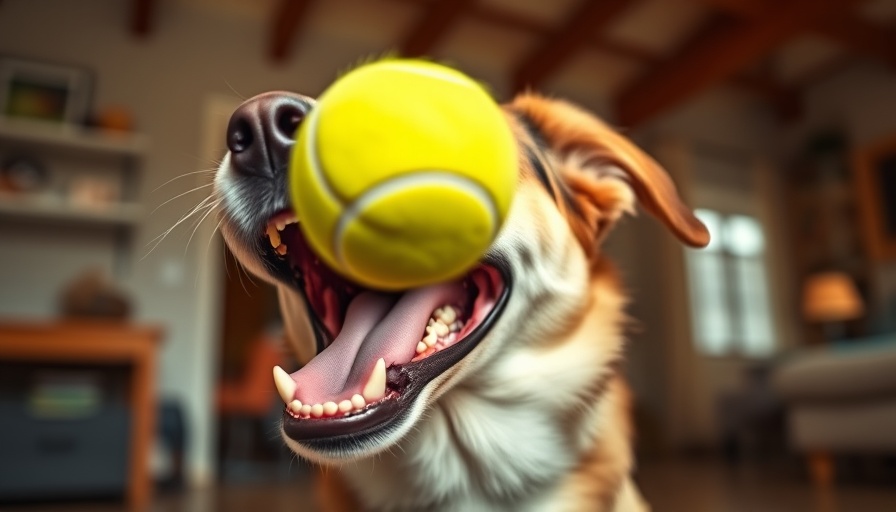
A Bold Move by Mattel: Partnering with OpenAI
In a groundbreaking collaboration, Mattel, the iconic toy manufacturer behind popular brands like Barbie and Hot Wheels, has joined forces with OpenAI to leverage the innovative capabilities of Sora 2, an advanced AI video generation model. This powerful technology allows designers to transform mere sketches into dynamic, lifelike videos almost instantaneously—an ambitious leap into a future where creativity knows no bounds.
The Immediacy of Imagination: Redefining Toy Design
Imagine a time when the concepts for toys could be animated within seconds. No more waiting for tedious mock-ups; Sora 2 changes the game by allowing creators to visualize ideas from day one. As the design team utilizes this cutting-edge AI, they have reported an exhilarating shift in the creative process. Rapid ideation means that the magic of imagination can now be seen in realistic representations, showcasing movement, lighting, and character behaviors that once took weeks to produce.
AI Innovating in the Creative Industry
This partnership signifies a growing trend in utilizing AI tools not just in tech sectors but also within creative industries. Enhanced creativity and reduced design timelines granted by technology like Sora 2 empower companies like Mattel to stay competitive in an ever-evolving market.
OpenAI’s CEO, Sam Altman, emphasizes that this partnership is indicative of how generative AI models are transforming product ideation and development, fundamentally changing how designers think and operate. “One of their designers can now start with a sketch and then turn these early concepts into something that you can see and share,” Altman noted.
Controversies and Ethical Concerns Surrounding AI
As exciting as these advancements are, they also raise important ethical concerns. The Sora 2 model pulls information from a vast dataset, leading to debates on the ownership of AI-generated content. Critics argue that as synthetic media floods social platforms, distinguishing between authentic and AI-generated content may become challenging. Concerns about intellectual property violations loom large, especially with companies like Disney opting out to protect their cherished characters.
This tension speaks to larger questions about AI's societal impacts, including the regulation of creative tools and content ownership as machine learning progresses. As technology reshapes the creative landscape, how can we ensure responsible practices when using AI in artistic expressions?
The Future of Play: Opportunities Ahead
Despite challenges, the future seems bright as Mattel capitalizes on AI’s capabilities. The potential for generating eye-catching, animated toy prototypes promises a wealth of marketing opportunities and could result in significant savings in product development. Instantaneous animations not only enhance internal operations but also revolutionize how companies communicate their brand stories to consumers.
As the industry makes strides toward efficient design processes, the likely outcome is an increase in personalization through AI-driven marketing campaigns. From understanding consumer preferences to generating targeted advertising strategies, the integration of AI in marketing could further enhance product visibility and consumer engagement.
What Does This Mean for Consumers?
The fusion of nostalgia and futuristic technology creates new avenues for childhood play and learning. However, it also prompts critical reflections about AI’s influence on childhood experiences and interactions with brands. As we embrace the innovative landscape that Mattel and OpenAI are crafting, consumers should remain aware of the implications of AI on creativity and authenticity in the products they cherish.
Final Thoughts: The Intriguing Intersection of AI and Creativity
In conclusion, Mattel’s collaboration with OpenAI marks a significant milestone for both the toy industry and the realms of artificial intelligence. As we witness nostalgia meet futuristic technological advancements, the excitement and uncertainties intertwined with this journey will greatly influence not only the design of toys but the trajectory of marketing and consumer engagement in a world increasingly surrounded by AI.
So, as you reflect on your own understanding of AI in the creative space, consider the implications of such partnerships. What experiences can we create, and how can the balance between innovation and ethical practice be achieved? Your thoughts matter as we navigate this brave new world together.
 Add Row
Add Row  Add
Add 




Write A Comment